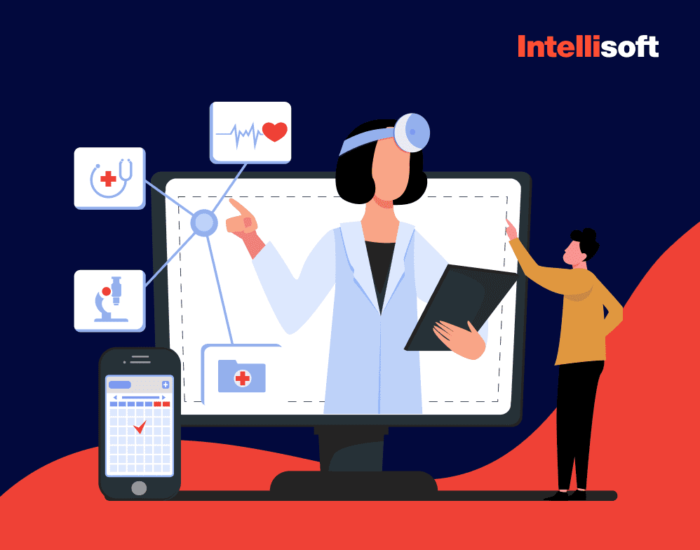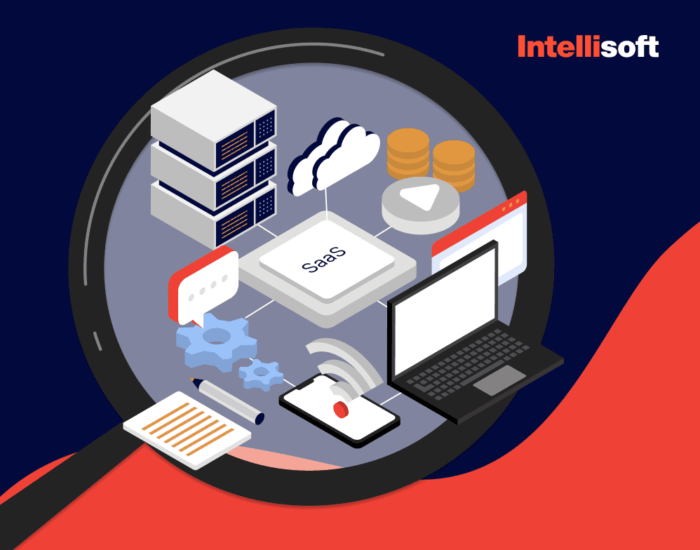Clients’ testimonials
Transform your concept into a plan for implementing your project
Why do you need the Discovery Phase?
The Advantages of the Discovery Phase
The Planning Phase Of A Project Includes
Defining Business Goals
We conduct research and analysis to understand the project’s fundamental goals, general scope, and aspirational targets.
Clarifying Success Criteria
During the project plan phases, we define measurable success criteria for the client, end-users, and all other stakeholders to ensure everyone is aligned around the project’s objectives.
Mapping User Journeys
To improve the end-user experience, we visualize how a person uses the product to achieve their desired goals through user journey mapping.
Conducting Technical Analysis
We provide functional and technical analyses of the product and recommend relevant technologies and tools for development. Additionally, we select appropriate services that can help secure future price reductions.
Finalizing Deliverables
We create a set of documents with finalized deliverables that define the next steps for product implementation. These deliverables serve as a roadmap for the project and help ensure that everyone involved understands the project’s scope and objectives.
Who is involved in the Discovery Phase
Reasons To Hire IntelliSoft For Discovery Phase
Streamlined communication
Top-notch project management
Consistent delivery
Fast onboarding
Relevant data for grounded decisions
Discovery Phase Deliverables
Industries we serve
Download our portfolio with previous projects
The best proof of our work is the portfolio with our past projects. You can see what IntelliSoft’s clients think about our cooperation. Check out projects for various industries.

Our Tech Stack
UXPin
Statista
Miro
Figma
Related Services
Frequently Asked Questions (FAQ)
Yes, the discovery project Phase is often considered a part of the project initiation phase. The project Discovery Phase is the step of the project management life cycle, where the project team defines the project’s objective to determine whether the project is worth pursuing and, if it is, to create a project charter or an initial project plan.
During the initiation phase, the project team conducts a feasibility study to evaluate the project’s viability and potential success. The Discovery Stage is essential to this study, gathering information about the project’s objectives, requirements, stakeholders, and risks. The data collected during the Discovery Phase helps the project team to make informed decisions about the project’s feasibility, scope, and budget.
Therefore, the Discovery Phase is often considered a part of the project initiation phase, as it helps to define the project’s objectives, scope, and feasibility and lays the groundwork for the subsequent stages of the project management life cycle.
The length of the Discovery Phase can vary depending on the complexity of the project and the amount of information that needs to be gathered. Depending on the project’s scope, a Discovery Phase can generally take a few weeks to a few months.
The Discovery Phase can be completed in a few weeks for smaller projects with well-defined requirements. In contrast, larger and more complex projects may require a more extended Discovery Phase to ensure that all aspects of the project are thoroughly analyzed and understood. The duration of the steps in discovery process also depends on factors such as the number of stakeholders involved, the availability of resources, and the level of collaboration between the project team and the client.
The length of the Discovery Phase is determined by the goals and objectives of the project, the amount of research and analysis required to define these goals and objectives, and the amount of time needed to gather and analyze data. It is important to remember that the Discovery Phase is a crucial part of the project development process. Taking the time to complete it thoroughly can help avoid problems and delays later in the project.
IntelliSoft prioritizes clear and effective communication between our development team and clients throughout the project development process, including during the Discovery Phase. Effective communication is essential to ensure the project meets the client’s needs and is delivered on time and within budget.
We use various channels such as email, instant messaging, video conferencing, and phone calls to facilitate communication. We also establish a communication plan that outlines daily, weekly, and monthly calls and meetings between clients and teams. This plan ensures that all stakeholders are well-informed and comprehensively understand the project objectives.
During the Discovery Phase, our developers communicate with clients to gather requirements, understand business objectives, and clarify any questions or concerns. Our team is proficient in English, and we actively improve our language skills to ensure that cultural and language differences do not impede communication.
We also provide regular updates on the project’s progress, including any challenges we may encounter and how we plan to overcome them. Our project managers take full responsibility for managing the scope, schedule, budget, and team to ensure the seamless delivery of your product.
Yes, you can use the Discovery Phase service even if you’re not planning to continue with the project development with IntelliSoft. The Discovery Phase is an essential step for any software development project. It can provide valuable insights into the feasibility of your project, help you identify potential risks and challenges, and allow you to create a roadmap for your project’s development.
During the Discovery Phase, our team of experts will work with you to understand your business requirements and objectives, evaluate the feasibility of your project, and provide you with a detailed plan of action. We will also thoroughly analyze your target market and competitors, helping you better understand the market landscape.
At the end of the UX Discovery Phase, you will receive deliverables such as a team composition plan, clickable UX/UI prototype, vision and scope document, high-level project plan, technical proposal, and cost proposal with estimates. These deliverables can be used to make informed decisions about your project, whether you continue with IntelliSoft.
By using the Discovery Phase service, you can minimize the risk of investing in a project that may not be feasible or may not meet your business requirements. It’s a great way to test your ideas, assess your options, and create a solid foundation for your project’s development.
The Discovery Phase is the stage of the software development process where a team of experts gathers information about the project’s goals, requirements, and constraints. The Discovery Phase aims to ensure that everyone involved in the project understands what is expected of them, what the project entails, and how the team will achieve its goals. During the Discovery Phase, the team conducts market research, competitor analysis, user research, and analysis of the client’s requirements to develop a clear understanding of the project’s scope and potential challenges. Based on these findings, the team creates a product roadmap, a project plan, and other documentation necessary to guide the project’s development. The outcome of the Discovery Phase is a set of documents that outline the project’s vision, goals, and requirements, along with a plan for how to move forward.
A Discovery Phase typically includes the following components:
- Project initiation: This includes an assessment of the project’s feasibility, budget, timeline, and goals, as well as identifying the project team.
- Business analysis involves gathering information about the project requirements, user needs, and business goals.
- Market research includes analyzing the market and competitors to identify trends, opportunities, and potential challenges.
- User research involves gathering feedback from potential users to understand their needs and preferences.
- UX/UI design includes creating wireframes and prototypes to visualize the project’s user interface and user experience.
- Technical analysis: This involves assessing the project’s technical requirements, including the choice of the technology stack and any third-party integrations.
- Project planning includes defining the project scope, creating a timeline and budget, and identifying potential risks.
The outcome of the Discovery Phase should be a set of comprehensive documents outlining the project’s vision, goals, requirements, and constraints, along with a detailed plan for moving forward with the project’s development.
Skipping the Discovery Phase can lead to several negative consequences, such as:
- Incomplete or unclear understanding of the project requirements: If the project requirements are not correctly understood, it can lead to delivering a product that doesn’t meet the client’s expectations, resulting in dissatisfaction, rework, or even project failure.
- Increased project risk: Skipping the Discovery Phase can lead to unidentified project risks, resulting in schedule delays, budget overruns, and scope creep.
- Poor project planning: With a thorough understanding of the project requirements and constraints, project planning can be successful, leading to realistic timelines and budgets.
- Lack of alignment with business goals: The Discovery Phase helps align the project goals with the business goals, ensuring that the final product aligns with the client’s objectives.
- Inefficient use of resources: Skipping the Discovery Phase can lead to inefficient use of resources, including time and money, as the project team may have to spend more time correcting mistakes and addressing issues that could have been prevented through proper planning and requirements gathering.
In service design, the Discovery Phase refers to the initial stage of the design process, where designers conduct research and gather information to comprehensively understand the service they are designing. During this phase, designers engage with stakeholders, including customers, employees, and other relevant parties, to identify their needs and pain points. They also examine the service’s existing processes, infrastructure, and policies to identify areas for improvement. The insights gained during the Discovery Phase provide the foundation for developing and designing a new or improved service.
- A Discovery Phase session is a collaborative workshop or meeting that brings together stakeholders, including clients, designers, developers, and other relevant parties, to gain a shared understanding of the project’s goals and requirements. The session aims to identify the project’s key objectives, constraints, and success criteria and explore possible solutions and approaches to achieving them.
- During the Discovery Phase session, stakeholders typically engage in activities such as brainstorming, user research, requirements gathering, and idea generation. The session may also involve using various tools, such as user personas, user journey maps, and wireframes, to help visualize and communicate ideas.
- Overall, the Discovery Phase session is a critical design process component. It helps establish a shared vision and understanding of the project among all stakeholders and provides a solid foundation for the subsequent design and development phases.
The duration and price of the Discovery Phase can vary depending on the complexity and scope of your project. Typically, the duration can range from a few weeks to a few months.
The cost can also vary based on several factors, such as the number of team members involved, the type of expertise required, the duration of the Discovery Phase, and the level of detail and documentation required.
At IntelliSoft, we offer customized Discovery Phase services tailored to your specific needs and budget. Please contact us for a consultation to discuss your project and receive a quote for our services.
A discovery session is a collaborative process between the client and the development team to explore and define the project requirements and goals. Here’s what typically happens during a discovery session:
- Introduction: The session starts with introductions and an overview of the project, including the client’s business objectives, vision, and desired outcomes.
- Gathering Requirements: The team works with the client to gather and document the project requirements, including features, functionality, and technical specifications.
- Market Analysis: The team comprehensively analyzes the market and the competition to identify opportunities, challenges, and risks.
- User Research: The team researches the target audience’s needs, preferences, and behavior patterns.
- Ideation and Concept Development: The team works with the client to brainstorm ideas, develop concepts, and explore different approaches to meet the project requirements.
- Design and Prototyping: Based on the requirements and concepts, the team creates a clickable prototype or wireframes to visualize and test the product concept with users.
- Technical Feasibility: The team evaluates the feasibility from a technical perspective, identifying potential roadblocks or limitations.
- Scope and Budget: The team defines the project scope, timeline, and budget based on the requirements, technical feasibility, and market analysis.
- Deliverables: The team summarizes the findings and outputs from the Discovery Phase, including a team composition plan, clickable UX/UI prototype, vision, scope document, high-level project plan, technical proposal, and cost proposal with estimates.
Overall, the discovery session aims to provide a comprehensive understanding of the project requirements, user needs, and technical feasibility to ensure the project’s success.
The 3 stages of Discovery can vary depending on the context and approach, but generally, they are:
- Problem Definition: This stage involves identifying the problem or opportunity that needs to be addressed. It includes researching and understanding the context and stakeholders involved, as well as defining the goals and objectives of the project.
- Ideation: In this stage, ideas are generated and explored to find potential solutions to the problem., which includes brainstorming, sketching, prototyping, and testing to determine the feasibility and desirability of the ideas.
- Validation: This stage involves testing and validating the ideas generated in the ideation stage. It includes user research, testing, and refining the ideas to ensure they meet the users’ needs and achieve their goals and objectives.
The cost of a Discovery Phase can vary depending on several factors, such as the project’s complexity, the duration of the Discovery Phase, the size of the team involved, and the deliverables required. Generally, a Discovery Phase can cost anywhere from a few thousand to tens of thousands of dollars. It’s best to consult with us to get an accurate estimate based on your needs and requirements.
A project Discovery Phase is essential for several reasons:
- Understanding the project requirements: The Discovery Phase helps to define and understand the project requirements, including the business objectives, user needs, and technical requirements, which helps ensure the project is aligned with the client’s goals.
- Defining the project scope: The Discovery Phase helps to define the project scope by identifying the key features and functionalities required for the project, which helps to ensure that the project stays within budget and is completed on time.
- Risk assessment: Potential risks are identified and assessed during the Discovery Phase, which helps to mitigate risks and avoid potential roadblocks during the project.
- Cost estimation: The Discovery Phase helps to estimate the project’s costs accurately, which allows clients to plan their budgets and allocate resources accordingly.
- Team composition: The Discovery Phase helps determine the skills and expertise required for the project, which helps to ensure that the right team is assembled to deliver the project successfully.
Overall, the Discovery Phase helps ensure the project is well-planned, well-defined, and has the best chance of being completed successfully within the specified timeline and budget.
After the Discovery Phase, the following steps typically include the following:
- Planning: Based on the findings from the Discovery Phase, the team can create a detailed project plan with specific timelines, milestones, and deliverables.
- Design: Once the project plan is in place, the team can start working on the design phase, which involves creating wireframes, visual designs, and product prototypes.
- Development: After the design is approved, the development phase can begin, which involves writing code, building the product, and implementing the features.
- Testing: Once the development phase is complete, the team can start testing the product to ensure it meets the requirements and works as intended.
- Launch: The product can be launched or released to the market after successful testing.
- Maintenance: Once the product is live, it may require ongoing maintenance and updates to keep it functioning correctly and meeting users’ needs.
The following steps after the Discovery Phase depend on the specific project and its requirements. The project team should work together to determine the best course of action based on the findings from the Discovery Phase.
The number of people needed for a project Discovery Phase can vary depending on the complexity and scope of the project. Typically, a project discovery team includes a project manager, business analyst, UX designer, and technical lead. Additional members may consist of subject matter experts and stakeholders as needed. The size and composition of the team can be customized based on the project’s specific needs.






